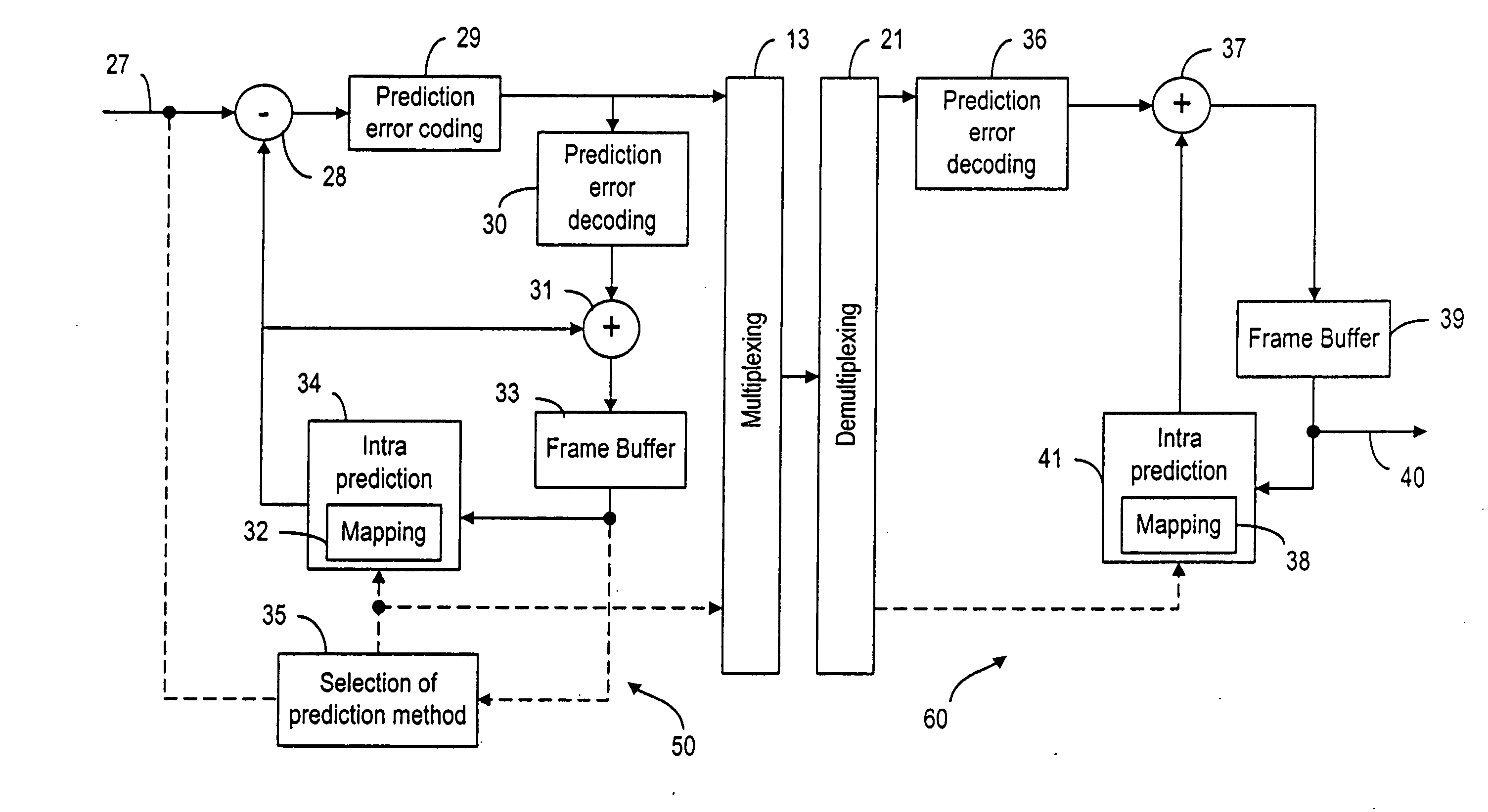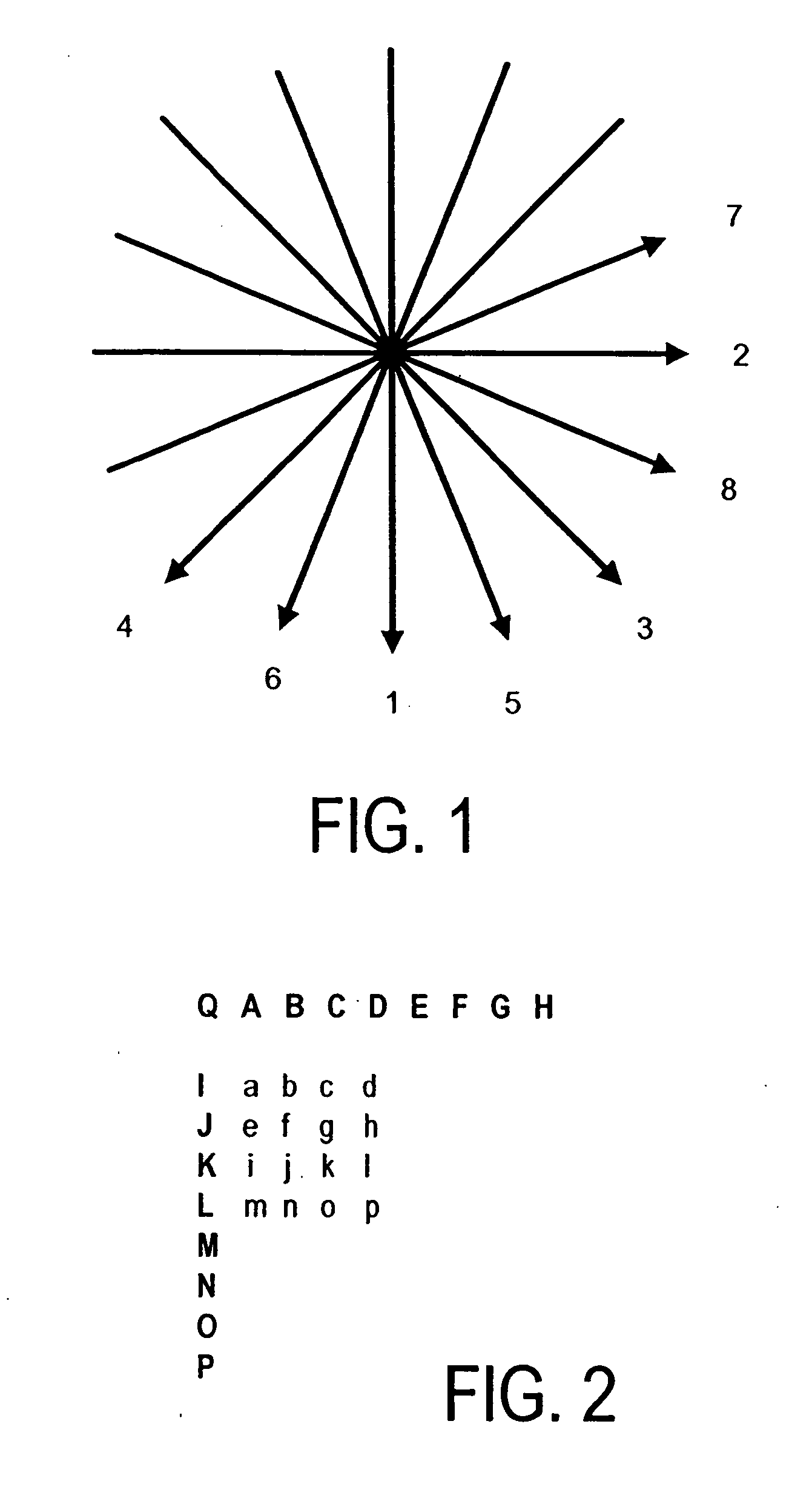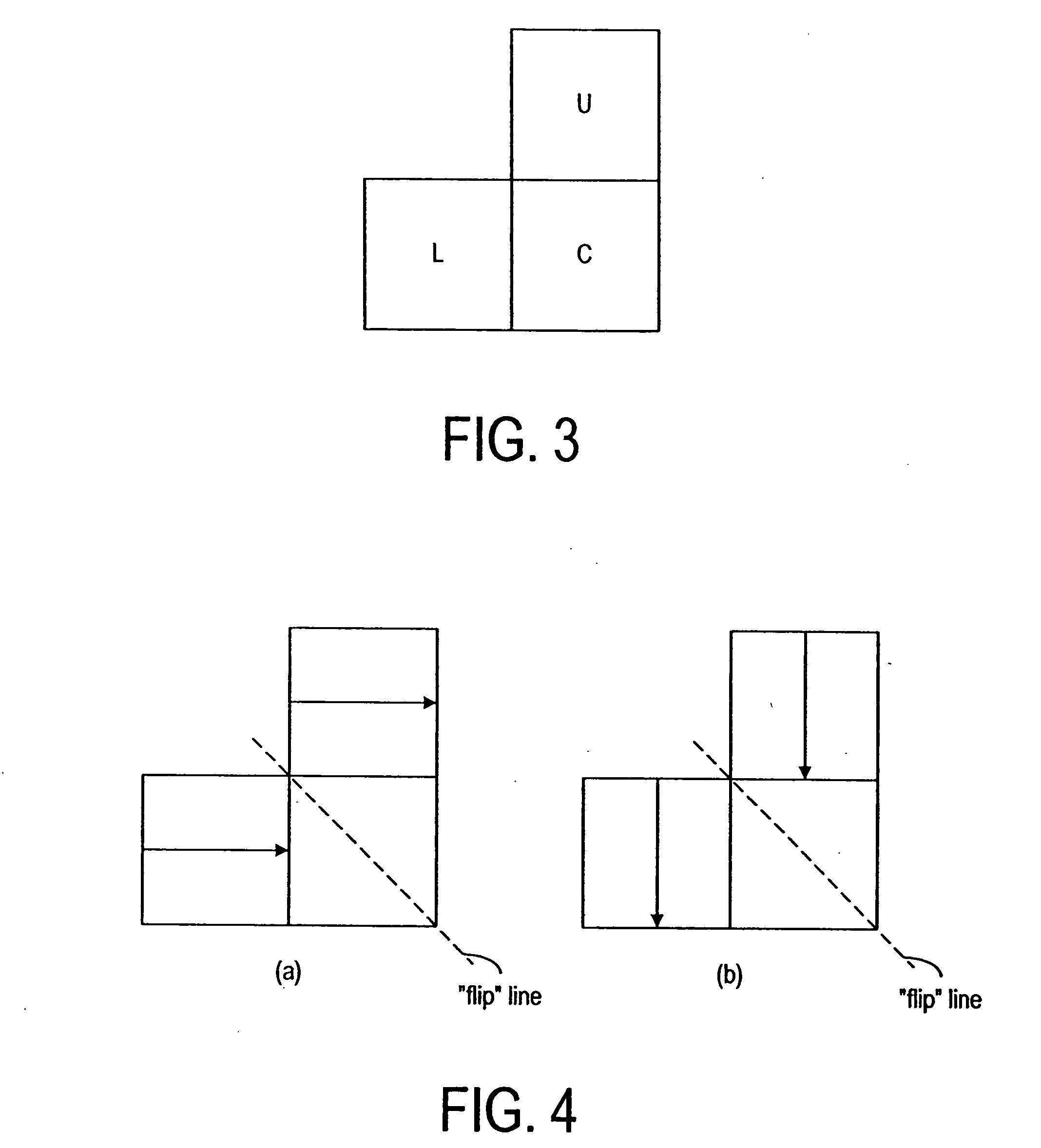Spatial prediction based intra coding
a prediction and spatial technology, applied in the field of image coding, can solve the problems of reducing the transmission rate of the original frame, reducing the transmission rate, and rendering real-time image transmission impossible,
- Summary
- Abstract
- Description
- Claims
- Application Information
AI Technical Summary
Benefits of technology
Problems solved by technology
Method used
Image
Examples
Embodiment Construction
[0108] An embodiment of the present invention utilizes the property that it is possible to obtain an ordered list of prediction modes for one combination of prediction modes of neighboring blocks as a function of prediction modes for another combination. For illustration purposes, prediction modes of two neighboring blocks U and L, as shown in FIG. 3, are used to infer the prediction of the current block C. It is noted that a combination of prediction modes in FIG. 4a can be obtained by flipping diagonally the prediction modes, as shown in FIG. 4b. Accordingly, the nth most probable prediction mode for block C, when the combination of modes in FIG. 4a is used, should be the same as the “flipped diagonally”, nth-most-probable prediction mode for the combination of modes in FIG. 4b. Thus, if the neighboring blocks U and L have the modes “vertical” and “vertical”, the prediction mode of the current block C is most probably “vertical” (FIG. 4b). Consequently, when these blocks are “flip...
PUM
 Login to View More
Login to View More Abstract
Description
Claims
Application Information
 Login to View More
Login to View More - R&D
- Intellectual Property
- Life Sciences
- Materials
- Tech Scout
- Unparalleled Data Quality
- Higher Quality Content
- 60% Fewer Hallucinations
Browse by: Latest US Patents, China's latest patents, Technical Efficacy Thesaurus, Application Domain, Technology Topic, Popular Technical Reports.
© 2025 PatSnap. All rights reserved.Legal|Privacy policy|Modern Slavery Act Transparency Statement|Sitemap|About US| Contact US: help@patsnap.com



